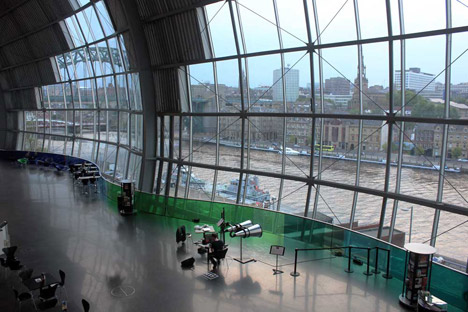Binaudios by Dominic Wilcox encourage users to "listen to the city"
London designer Dominic Wilcox has created a giant pair of audio binoculars that allows users to "listen" to – rather than see – places around Newcastle-upon-Tyne, England (+ slideshow).
Working with creative technologist James Rutherford, Wilcox took a pair of tourist binoculars as the starting point for creating the Binaudios device.
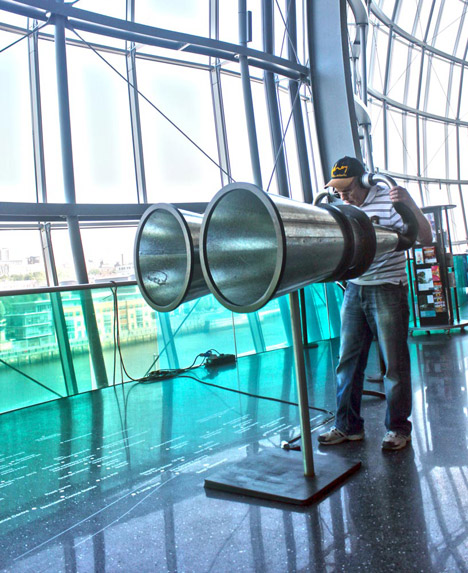
The device looks like a giant pair of binoculars that rotate from a fixed column, but the eyepieces connect to the user's ears so they can hear sounds recorded at locations in the distance.
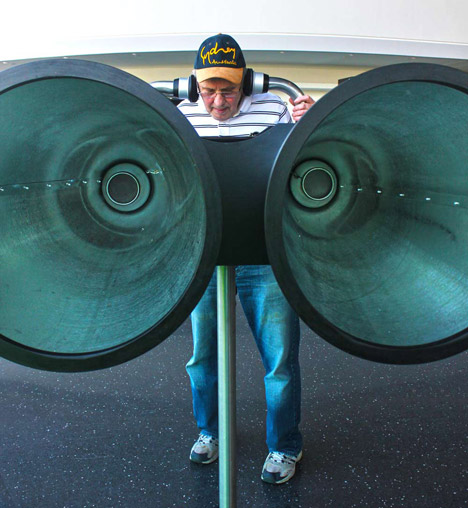
Binaudios use a Raspberry Pi computing unit and rotating ‘listening cones’ to convert orientation into a soundscape, revealing the locations' distinct sounds. The device was installed in Foster + Partner's The Sage Gateshead music performance centre above the River Tyne last week.
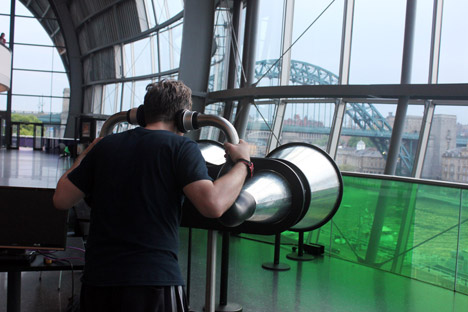
"The venue we had been given is used for music and sound performances, so we wanted to create something involving audio," said Wilcox. "The view across the river is spectacular and the idea for these Binaudios emerged."
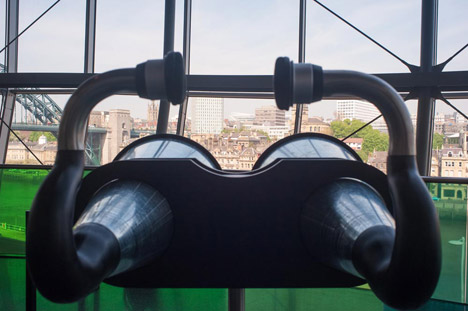
Binaudios can be pointed at 50 different locations outside the building's glass facade, some in view and others beyond the skyline. Each is pinpointed on a floor map in front of the device.
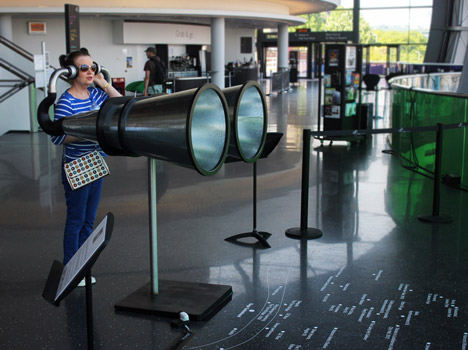
"As the Binaudios are rotated the stereo sounds move from one ear to the other creating a real feeling of listening to the city across the river," said Wilcox.
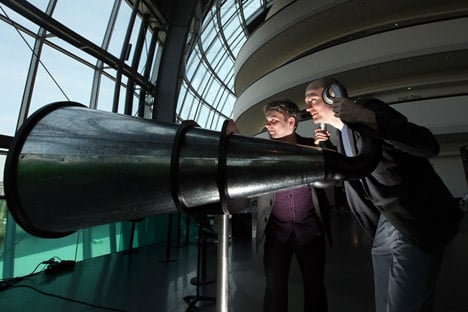
Sounds captured from across the city are used alongside historical clips, each coded to activate when the Binaudios point to the area they were originally recorded in.
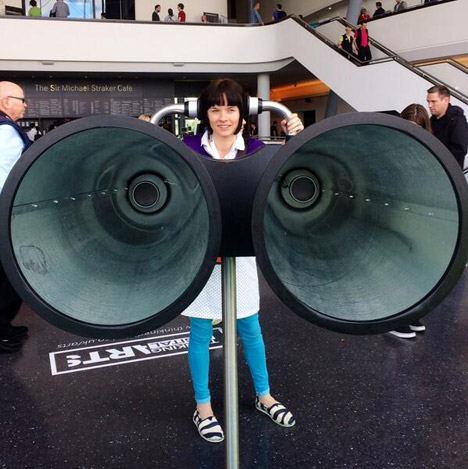
"Turn the giant listening cones toward the football stadium to hear the crowd chanting or to the Tyne Bridge to hear King George V's speech when he opened the bridge in 1928," explained Wilcox. "Point it toward the park to listen to sounds such as skateboarders and local tennis players."
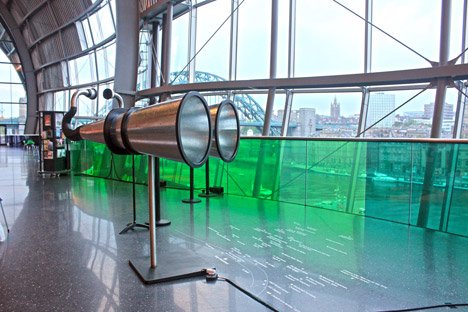
"As the Binaudios are turned each sound merges with the sound next to it, like a DJ soundscape of previously unconnected things," Wilcox said.
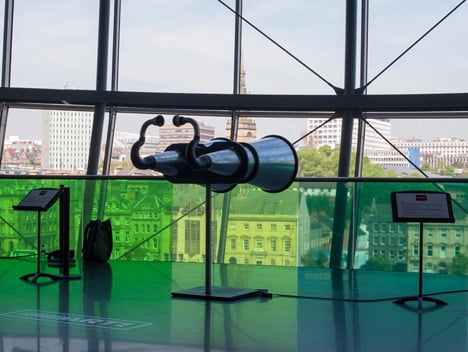
"The train station sound fades into the sound of a street performer followed by road works then a local primary school children singing," he added.
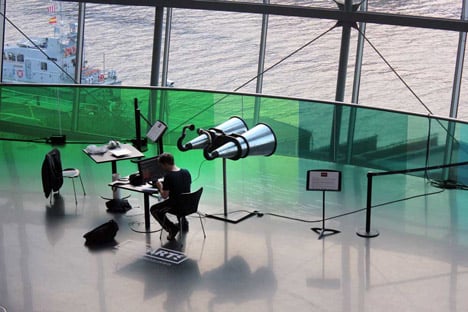
The project was commissioned for the Thinking Digital Conference, which took place at the Sage last week.
